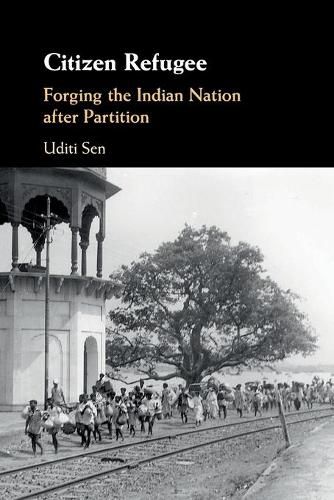Readings Newsletter
Become a Readings Member to make your shopping experience even easier.
Sign in or sign up for free!
You’re not far away from qualifying for FREE standard shipping within Australia
You’ve qualified for FREE standard shipping within Australia
The cart is loading…






This innovative study explores the interface between nation-building and refugee rehabilitation in post-partition India. Relying on archival records and oral histories, Uditi Sen analyses official policy towards Hindu refugees from eastern Pakistan to reveal a pan-Indian governmentality of rehabilitation. This governmentality emerged in the Andaman Islands, where Bengali refugees were recast as pioneering settlers. Not all refugees, however, were willing or able to live up to this top-down vision of productive citizenship. Their reminiscences reveal divergent negotiations of rehabilitation ‘from below’. Educated refugees from dominant castes mobilised their social and cultural capital to build urban ‘squatters’ colonies’, while poor Dalit refugees had to perform the role of agricultural pioneers to access aid. Policies of rehabilitation marginalised single and widowed women by treating them as ‘permanent liabilities’. These rich case studies dramatically expand our understanding of popular politics and everyday citizenship in post-partition India.
$9.00 standard shipping within Australia
FREE standard shipping within Australia for orders over $100.00
Express & International shipping calculated at checkout
This innovative study explores the interface between nation-building and refugee rehabilitation in post-partition India. Relying on archival records and oral histories, Uditi Sen analyses official policy towards Hindu refugees from eastern Pakistan to reveal a pan-Indian governmentality of rehabilitation. This governmentality emerged in the Andaman Islands, where Bengali refugees were recast as pioneering settlers. Not all refugees, however, were willing or able to live up to this top-down vision of productive citizenship. Their reminiscences reveal divergent negotiations of rehabilitation ‘from below’. Educated refugees from dominant castes mobilised their social and cultural capital to build urban ‘squatters’ colonies’, while poor Dalit refugees had to perform the role of agricultural pioneers to access aid. Policies of rehabilitation marginalised single and widowed women by treating them as ‘permanent liabilities’. These rich case studies dramatically expand our understanding of popular politics and everyday citizenship in post-partition India.